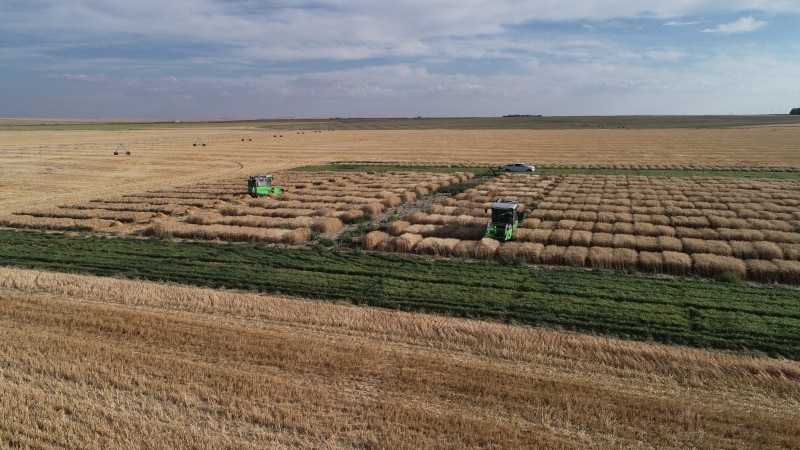The wheat of the future will deliver new technologies like herbicide tolerance, solid stem and powerful disease resistance. Our team is only beginning to show what’s possible.
Being as well-established a crop as it is, it might be hard to believe that truly exciting things are just beginning to happen in wheat. After joining the team at Limagrain Cereals Research Canada (LCRC) just a couple of months ago, I can tell you that this is indeed the case.

The diverse group of breeding experts on the LCRC team — including our North American research head Benzon Lorenzana — is at the forefront of wheat breeding, driving innovation and pushing the boundaries of what this seemingly traditional crop can achieve.
The team is made up of individuals with rich backgrounds and experiences, each contributing a unique perspective to the world of wheat breeding.
After studying to become a wheat breeder for over seven years, I bring my knowledge and experience to the LCRC team. Having earned my stripes in the field of plant breeding beginning as a grad student at the University of Guelph, I had the benefit of studying under the late Ali Navabi, a renowned winter wheat breeder. I then worked as a canola breeding assistant before continuing my graduate studies in the United Kingdom.
My passion for plant breeding and contributing to Canadian agriculture made joining the LCRC team last year a no-brainer.
The team, housed at our research station in Saskatoon, Sask., has a commitment to apply new and appropriate tools in breeding, with a strong emphasis on genomic selection. This approach has allowed our team to develop improved wheat cultivars that can help solve real-world challenges and meet the evolving needs of our farmers.
The integration of new tools and technologies has been a game-changer, enhancing both quality and yield targets.
Our two wheat varieties already on the market — CS Daybreak and CS Accelerate — have already made waves in the wheat world, exhibiting excellent disease packages and setting the standard for what private sector wheat breeding can accomplish.
We’ve had the privilege of collaborating with Warburtons in making CS Accelerate, a Canadian Prairie Spring Red, part of their program. Since then, we’ve engaged in extensive testing, and the products we’re bringing forward for registration have garnered significant attention from them. It is rewarding to develop products that meet the needs of our end-user.

The Future
What we’ve brought to market so far is just the tip of the iceberg. Noteworthy is the coming introduction of CoAXium wheat, containing the patented non-GMO trait conferring tolerance to Aggressor AX Group 1 herbicides. This innovation provides farmers with another tool to tackle weed problems in their field. Our team is meticulously ensuring the safety of this novel trait through comprehensive testing by Health Canada and the Canadian Food Inspection Agency (CFIA) before release.
From disease resistance to herbicide tolerance, wheat varieties coming through our pipeline are brimming with promise. In the coming years, we will also be releasing varieties equipped with traits/genes such as solid stem and Sm1 to tackle the growing pest problem, highlighting our continuous efforts to meet the evolving needs of farmers.
Some of these varieties will be put forward for registration at the 2024 Prairie Grain Development Committee (PGDC) meeting.
The Canadian Advantage
Given the importance of the Canadian market to Limagrain’s strategic vision, we look forward to the CFIA issuing its guidance on animal feed consultations and clarifying the regulatory landscape when it comes to pre-market assessments on plant derived ingredients in animal feed.
There are unique advantages to doing business in Canada, including the positive aspects of our regulatory system and market dynamics. Canada is an ideal place for LCRC’s innovative products, which is why Limagrain formed its partnership with Canterra Seeds to create LCRC in the first place.
As we delve into the specifics of breeding objectives and the challenges posed by climate change, Shaoming Huang, our assistant breeder, is applying his experience in heat stress tolerance to create a strategy to develop climate-smart wheat. The acknowledgment of changing farmers’ needs in wheat varieties due to climate change and the emphasis on traits like drought tolerance underscores LCRC’s commitment to staying ahead of industry shifts.
Stay tuned for exciting things.
